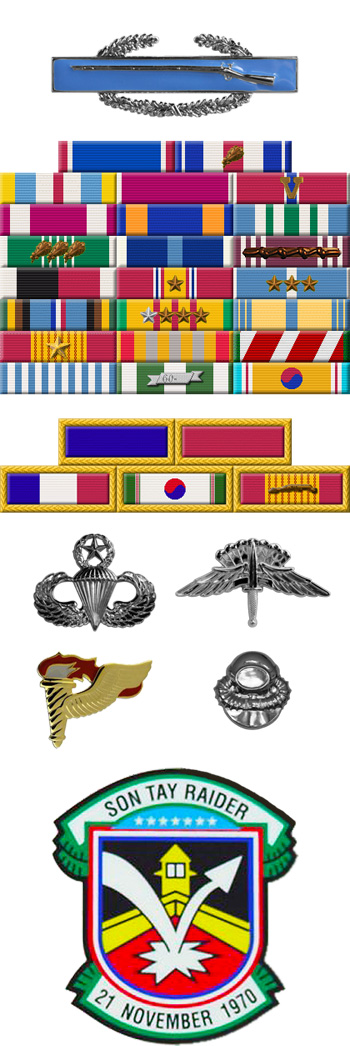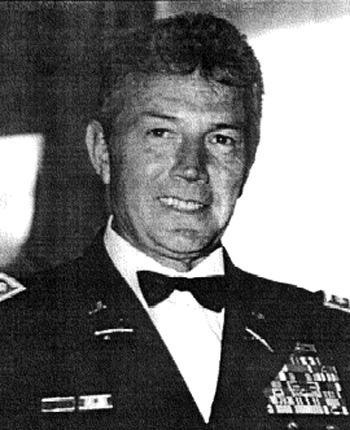
|
Richard J. Meadows |
 |
|||
| Rank, Service | ||||
Major O-4, U.S. Army |
||||
| Veteran of: | ||||
|
||||
| Tribute: | ||||
Dick Meadows was born on June 16, 1931, in Covington, Virginia. He enlisted in the U.S. Army on August 12, 1947, and after completing basic training and infantry training, he was assigned to the 456th Field Artillery Battalion of the 82nd Airborne Division at Fort Bragg, North Carolina, from February 1948 to April 1951. Sgt Meadows then deployed to Korea where he served with the 187th Regimental Combat Team from April 1951 to October 1952, followed by Special Forces training and service with the 10th Special Forces Group and then the 7th Special Forces Group from March 1953 to 1960. He then completed an exchange program between the 7th Special Forces Group and the British 22nd Special Air Service (SAS) Regiment from 1960 to September 1961. During this time, Sgt Meadows participated in an operation against terrorists and gun smugglers in Oman, and was one of the first two foreigners to be awarded the British SAS Wings. He deployed to Laos in September 1961 and served with the White Star Mobile Training Team until June 1962, when he went to Panama, where he served with the 8th Special Forces Group at Fort Gulick in the Panama Canal Zone from June 1962 to September 1965. After returning to Fort Bragg in September 1965, he volunteered for duty in Vietnam and deployed there with the Studies and Observation Group (SOG) from December 1965 to November 1966. He was next assigned to Fort Benning, Georgia, where he was given a direct appointment to Captain on April 14, 1967. Meadows served as a Company Commander with the Infantry Training Center at Fort Benning from May 1967 to January 1968, and then served a second tour with the SOG in Vietnam from February 1968 to June 1969. Maj Meadows then served as an instructor in the Ranger Department at Fort Benning from July 1969 to June 1971. During this time he assisted in writing the operations plan for the Son Tay Raid to free American POWs held in North Vietnam, and also served as an assault team leader for the operation on November 21, 1970. His next assignment was with the 1st Special Forces Group on Okinawa, with duty as a Defense Liaison to Indonesia, from March 1972 to June 1974, followed by service with the 7th Special Forces Group at Fort Bragg from June 1974 to January 1975. Maj Meadows' final assignment was as an instructor and the Assistant Division Chief for the jungle phase of Ranger School at Eglin AFB, Florida, from February 1975 until his retirement from the Army on June 1, 1977. After his retirement from the Army, Dick continued to serve the U.S. Government, serving as a Covert Operative in Tehran, Iran, during the Iran hostage rescue attempt in 1980, organizing special mission units, and as a consultant in efforts to thwart drug trafficking. He was inducted into the U.S. Army Ranger Hall of Fame in 1995. Dick Meadows died on July 29, 1995, and was buried at the Barrancas National Cemetery in Pensacola, Florida. He was posthumously awarded the Presidential Citizens Medal. |
||||
|
||||

